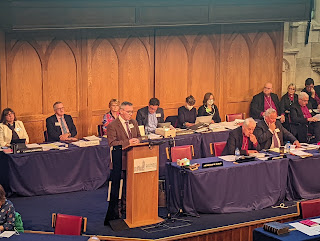Northern Ireland must lead the way towards clean energy growth and leave fossil fuels to the past
A letter to the press
THE publication of the Government's Clean Growth Strategy is good news for Northern Ireland. The focus on home energy efficiency, clean power, electric cars and planting new woodlands will mean jobs, lower bills and cleaner air.Offshore wind power provides an enormous opportunity for Northern Ireland. Harland & Wolff are now experts in the construction of giant offshore wind turbines. The white towers rising from the shipyard point towards a green-powered future.
Recent energy auctions for offshore wind power have set "astounding" prices well below those of nuclear power and even gas.
Giant battery technology that can store energy from renewables is also getting cheaper very quickly. AES Energy Storage installed the UK's largest battery at Kilroot power station in 2016.
The Department for the Economy's Wind Map for Northern Ireland web page says: "Northern Ireland is regarded as having one of the greatest wind energy resources in Europe." A 2011 Northern Ireland Offshore Renewable Energy Strategic Energy Action Plan found that we have also have excellent wave and tidal energy resources.
But has this plan been implemented? Where are the offshore wind farms? According to the Crown Estate offshore wind electricity map, we have none. A renewable energy revolution is under way. Northern Ireland needs to be leading the way towards clean growth - not stuck in a dirty, fossil-fuelled past, as some denialists would have us.
This post was published in the Belfast Telegraph 17 October 2017 and the Newsletter 18 October
2017.
This letter provoked a reply.
Environmental destruction of our land and sea by wind turbine farms should not be allowed to go onletter of the day: renewable energy
October 20 2017
Your correspondent Stephen Trew (Write Back, October 17) is clearly an enthusiasticsupporter of allegedly 'renewable' energy, in particular offshore wind generation. He clearly has no regard for the environmental destruction being wrought by both onshore and offshore wind turbine mega-farms.
Wind farm operators are heavily subsidised by taxpayers' money to generate electricity at inflated prices. They are also paid for keeping their turbines idle when their contribution to the grid is not required and when the wind does not blow or blows too hard.
Additionally, because of the unreliable nature of wind generation, public money must be ploughed into stand-by generation capacity - inevitably requiring the burning of fossil fuels.
This squandering of taxpayers' money has been justified to gullible politicians and academics as necessary to mitigate the effects of man-made global warming. This hypothesis has long since been disproven and, in any event, such mitigation attempts would be totally futile.
I would advise Mr Trew to visit the coasts of Great Britain to see the visual environmental destruction wrought by offshore wind farms. If he were to visit, as I have, the once-beautiful hills of Galloway in Scotland, he would see for himself the scarred moorland ploughed up to build new forests of these useless turbines onshore. There is nothing more destructive to the environment than the dogma of environmentalists.
advertisement
Mr Trew laments the absence of offshore turbine farms near Northern Ireland's coast. A recent plan to build a turbine city off the south east Down coast was abandoned after much public and commercial protest and the uncertainty of continuing future subsidy.
In future, all proposed wind turbine development must be subject to binding local referenda of those who live and/or make their living in the affected areas.
ALAN LOVE
And my letter of reply.
It seems the fossil-fuelled passions of Alan Love (Write Back, October 20) were ignited when I wrote, "Northern Ireland needs to be leading the way towards clean growth - not stuck in a dirty, fossil-fuelled past, as some denialists would have us (October 17)."Mr Love says wind farms are subsidised by taxpayers' money. True. But the cost of offshore wind technology is dropping rapidly.
This was reported in the Belfast Telegraph article, "Offshore wind farm subsidy costs drop to record lows in latest contract round" (News, September 11), which stated: "The cost of subsidies for the technology have fallen 50% since early 2015."
According to Bloomberg, UK offshore wind could soon provide power subsidy-free. On the other hand, fossil fuels receive a staggering $5 trillion dollars per year in subsidies worldwide, according to a peer-reviewed paper by academics from the International Monetary Fund (bit.ly/ffsub2017).
The UK government gives £6bn a year to fossil fuels - almost double what it provides to renewable energy providers (bit.ly/UKffsub).
Mr Love advised I visit the coast of Great Britain to see the "visual environmental destruction wrought by offshore wind farms".
On holiday last year in Wicklow, I saw the large offshore wind turbines gracefully generating clean energy in the Irish Sea. They were barely visible.



Comments